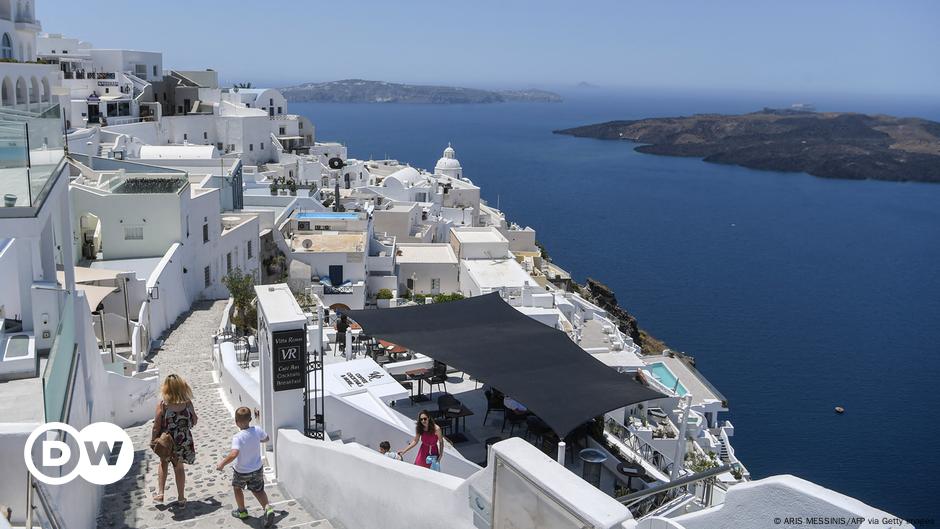Hundreds of earthquakes have shook the Greek island of Centorini in the previous week.
The popular tourist destination in the center of the Mediterranean Sea is one of the most volcanic islands in the region.
The trembling has led a short -term withdrawal from the island as some 6,000 people and visitors should have a more severe earthquake, amidst a potential volcanic explosion or tsunami speculation.
The Chief Fethimis Lake, the chief of the Greek seismic service, told the media on Tuesday that “the specialty of the current seismic activity is that no earthquakes have been seen so far which can be details as the main earthquake.”
Where are the earthquakes near Santorini?
Cyclades, a group of the islands, are registered in travelers, including Santorini, Amorgos, iOS and Anafi.
Earthquakes are originating from an area near the small islet of any ridges in the north-east of Centorini.
The islands sit on top of the aegian sea plate, which is part of the large Eurasian tectonic plate, moving away from a nearby African plate. The interaction between these two tectonic plates makes the Greek archipelago one of Europe’s most seismically active parts.
How acute are the shocks?
Hundreds of personal shocks have been recorded since last week. Many of them have unpublished bees by people on the ground and are of low magnitude.
George Kaveeris, director of the sesmological laboratory at the University of Athens, said that low-level shocks have been happening in the region for months, “since June 2024,” he told DW.
This cluster of activity, according to Kaviris, a new series of tremors again started the next day on 25 January.
“We have seen more than 2,300 earthquakes and many of them – now more than 45 – a magnitude is a magnitude, which is a phenomenon which is very low.”
The thesis can be felt by people on the ground as a “moderate” quake search and buildings may cause barely structural damage.
Thesis shock has inspired people to leave these islands for the mainland.
What are the risks related to these shaking?
Scientists may be able to measure the ongoing shocks, but there is no way to predict when and when there will be volatility.
However, Kaviris said that one of the two scenarios is likely to be. “The first is that it can be a ‘seismic herd’,” said.
Flock clusted seismic events – the ongoing shiver collections that can feel, but are not particularly disastrous for buildings and infrastructure.
“This one [scenario] Is optimistic and we hope we hope.
The second is a major earthquake that measures the magnitude above 5, which is accompanied by a greater risk of destructive effects.
Can there be tsunamis, volcanic eruptions or landlines?
Kaviris said that the activity in the Aegean Sea is tectonic in nature and is unlikely to lead a volcanic activity.
In the event of a large earthquake, there is a low risk of tsunami. While a tsunami is Impobile, the 1956 earthquake led to discovery of the incident.
Therefore, Kaviris advised people in the region to search for high land during the current round of shock, instead of taking a boat on the mainland.
“They should leave the beach and go to a high place,” Heer said.
Landslides and rock falls have already been reported in parts of the archipelago. It pose a security risk.
Basil Marjaris, Structural Symologist at the Greece Institute of Engineering Celebration and Earthquake Engineering, said, “In the last two days, there has been an increase in earthquake activity with strong earthquakes in the region, we saw landslides in the places of Santorini.”
Although new buildings in Greek islands have strict codes, some older buildings may be unsafe for more severe earthquakes.
“People in Santorini prefer to live on the edge of a place with a renunciation scene, but on the other hand, the thesis region is very dangerous,” said Margaris.
“In some cases, we have some warnings to local authorities to be more careful than these specific sites.”
Edited by: Fred Scholor






Leave a Reply